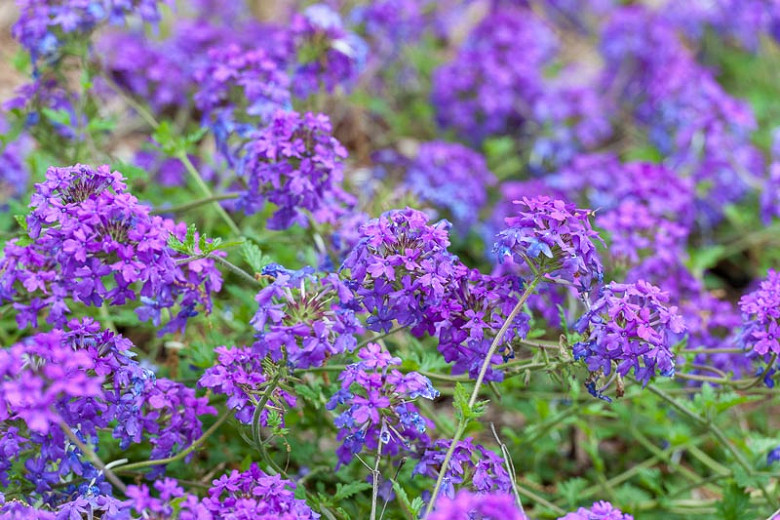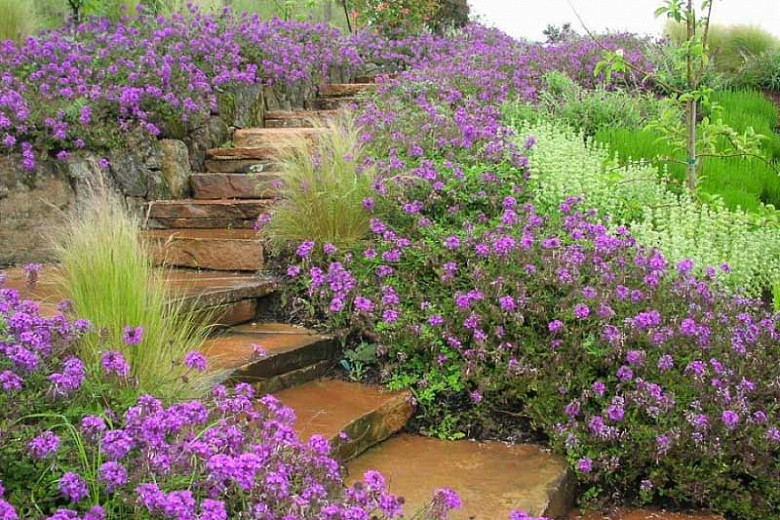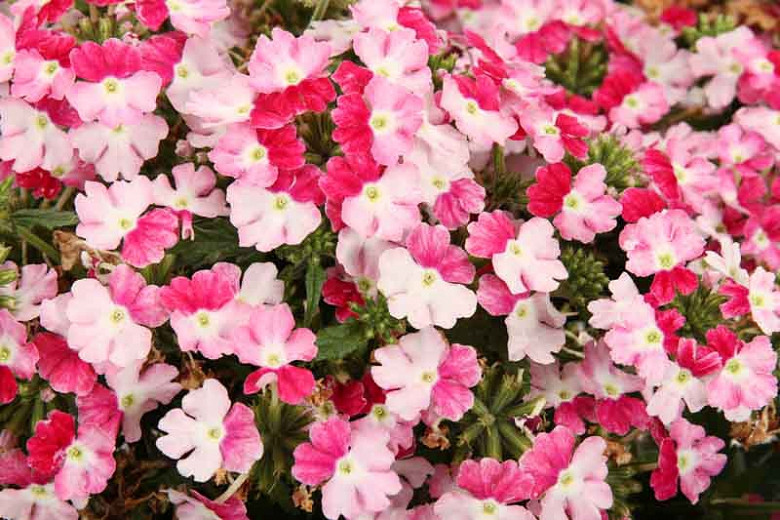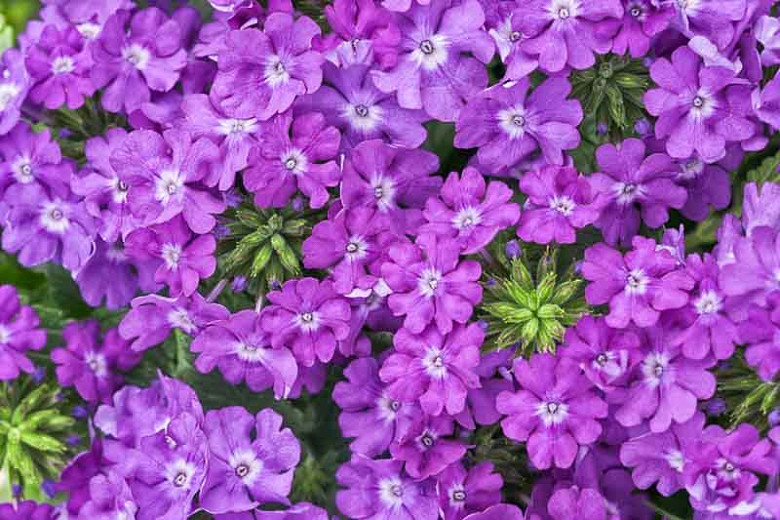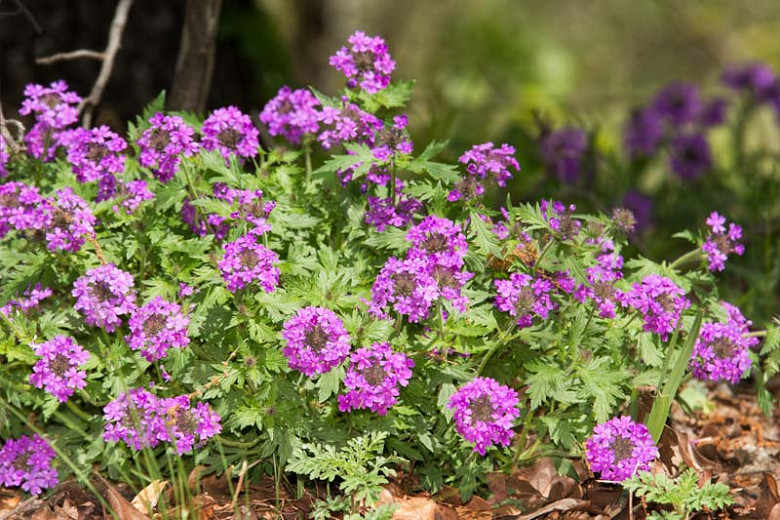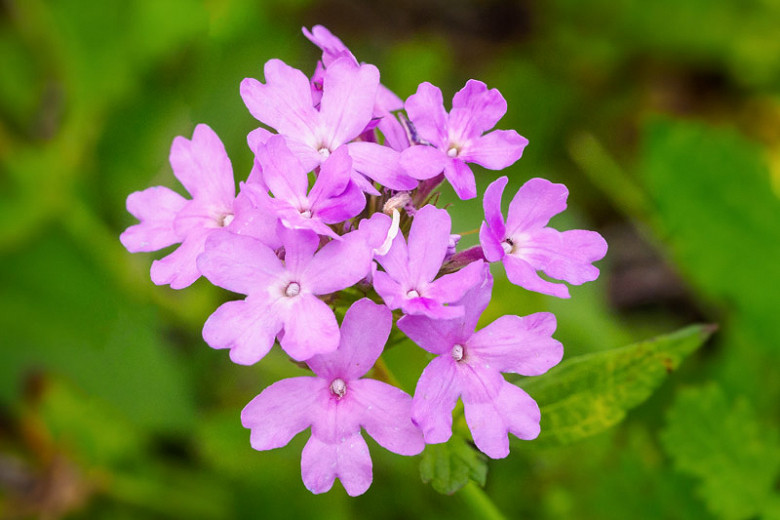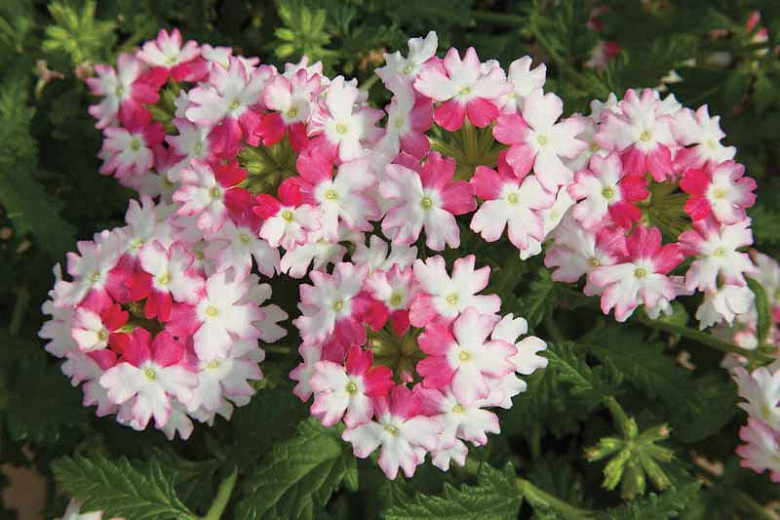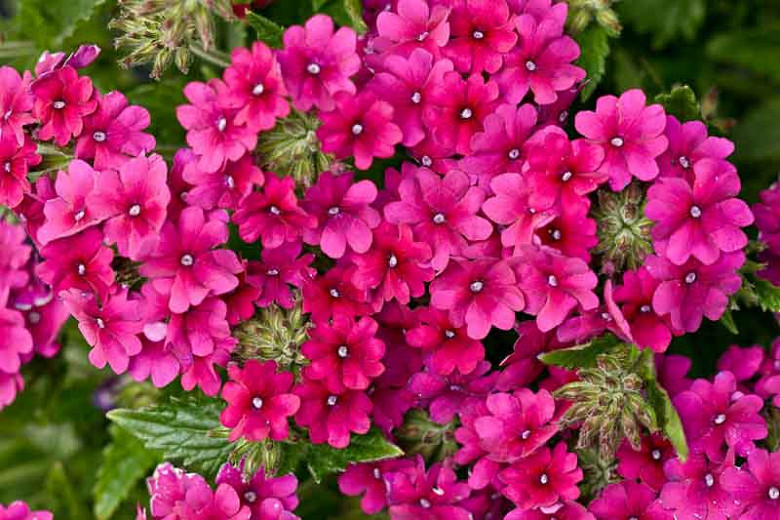Glandularia canadensis (Rose Vervain)
Glandularia canadensis (Rose Vervain) is a clumping, sprawling annual or perennial boasting abundant flat-topped clusters of up to 20 fragrant, rose-pink to rose-purple flowers from late spring to late summer. Blooming its heart out over a long season, Rose Vervain attracts butterflies and many pollinating insects. The deeply lobed dark green foliage creates a lovely foil for the showy flowers. Rose Vervain can spread quickly via ground-hugging stems rooting at the nodes where they touch the ground, to form a pretty, aromatic ground cover. This plant behaves as an annual where winters are harsh, as a perennial elsewhere. Glandularia canadensis is great for rock gardens, sunny borders, landscape restorations, trailing over rock walls or cascading from containers.
- Grows up to 6-18 in. tall (15-45 cm) and 12-24 in. wide (30-60 cm). Will self seed in ideal growing conditions.
- Performs best in full sun to part shade, in average, dry to medium, well-drained soils. Excellent drainage is important. Water during dry summers to prevent leaf loss. Mulch in winter to prevent freezing to death.
- Great candidate for borders or rock gardens and provides a stunning effect when planted en masse. Attractive as a ground cover, it is also perfect for edging, containers or hanging baskets.
- Easy to grow, resilient to most pests and diseases, this low maintenance plant is also drought, heat, dry soil and rocky soil tolerant. Keep an eye out for powdery mildew and spider mites.
- Propagate by root division, seed sown in spring or fall, softwood cuttings.
- Native to the United States, from Illinois south to central Texas, west to Colorado, east to Virginia and Florida.
Requirements
| Hardiness | 5 – 9 |
|---|---|
| Climate Zones | 4, 5, 6, 7, 8, 9, 12, 13, 14, 15, 16, 17, 18, 19, 20, 21, 22, 23, 24, H1, H2 |
| Plant Type | Annuals, Perennials |
| Plant Family | Verbena |
| Exposure | Full Sun, Partial Sun |
| Season of Interest | Spring (Late)Summer (Early,Mid,Late) |
| Height | 6" – 2' (15cm – 60cm) |
| Spread | 1' – 2' (30cm – 60cm) |
| Spacing | 24″ (60cm) |
| Water Needs | Low, Average |
| Maintenance | Low |
| Soil Type | Clay, Loam, Sand |
| Soil pH | Acid, Alkaline, Neutral |
| Soil Drainage | Moist but Well-Drained, Well-Drained |
| Characteristics | Fragrant, Showy |
| Native Plants | United States, Midwest, Illinois, Indiana, Iowa, Kansas, Michigan, Minnesota, Missouri, Nebraska, Ohio, Wisconsin, Northeast, Connecticut, Pennsylvania, Rocky Mountains, Colorado, Southeast, Alabama, Arkansas, Florida, Georgia, Kentucky, Louisiana, Mississippi, North Carolina, South Carolina, Tennessee, Virginia, West Virginia, Southwest, New Mexico, Oklahoma, Texas |
| Tolerance | Drought, Dry Soil, Rocky Soil |
| Attracts | Butterflies |
| Garden Uses | Banks and Slopes, Beds and Borders, Edging, Ground Covers, Patio and Containers |
| Garden Styles | City and Courtyard, Coastal Garden, Gravel and Rock Garden, Informal and Cottage |
